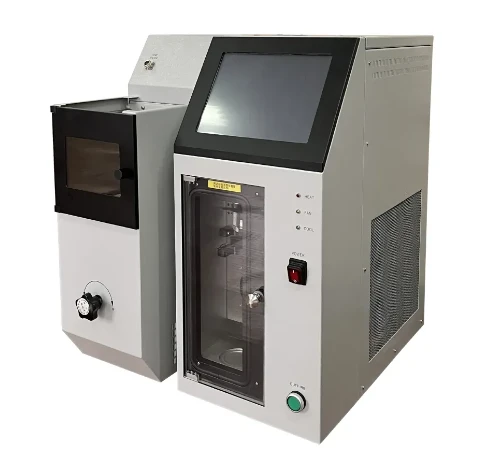 English
English



-
 Afrikaans
Afrikaans -
 Albanian
Albanian -
 Amharic
Amharic -
 Arabic
Arabic -
 Armenian
Armenian -
 Azerbaijani
Azerbaijani -
 Basque
Basque -
 Belarusian
Belarusian -
 Bengali
Bengali -
 Bosnian
Bosnian -
 Bulgarian
Bulgarian -
 Catalan
Catalan -
 Cebuano
Cebuano -
 China
China -
 China (Taiwan)
China (Taiwan) -
 Corsican
Corsican -
 Croatian
Croatian -
 Czech
Czech -
 Danish
Danish -
 Dutch
Dutch -
 English
English -
 Esperanto
Esperanto -
 Estonian
Estonian -
 Finnish
Finnish -
 French
French -
 Frisian
Frisian -
 Galician
Galician -
 Georgian
Georgian -
 German
German -
 Greek
Greek -
 Gujarati
Gujarati -
 Haitian Creole
Haitian Creole -
 hausa
hausa -
 hawaiian
hawaiian -
 Hebrew
Hebrew -
 Hindi
Hindi -
 Miao
Miao -
 Hungarian
Hungarian -
 Icelandic
Icelandic -
 igbo
igbo -
 Indonesian
Indonesian -
 irish
irish -
 Italian
Italian -
 Japanese
Japanese -
 Javanese
Javanese -
 Kannada
Kannada -
 kazakh
kazakh -
 Khmer
Khmer -
 Rwandese
Rwandese -
 Korean
Korean -
 Kurdish
Kurdish -
 Kyrgyz
Kyrgyz -
 Lao
Lao -
 Latin
Latin -
 Latvian
Latvian -
 Lithuanian
Lithuanian -
 Luxembourgish
Luxembourgish -
 Macedonian
Macedonian -
 Malgashi
Malgashi -
 Malay
Malay -
 Malayalam
Malayalam -
 Maltese
Maltese -
 Maori
Maori -
 Marathi
Marathi -
 Mongolian
Mongolian -
 Myanmar
Myanmar -
 Nepali
Nepali -
 Norwegian
Norwegian -
 Norwegian
Norwegian -
 Occitan
Occitan -
 Pashto
Pashto -
 Persian
Persian -
 Polish
Polish -
 Portuguese
Portuguese -
 Punjabi
Punjabi -
 Romanian
Romanian -
 Russian
Russian -
 Samoan
Samoan -
 Scottish Gaelic
Scottish Gaelic -
 Serbian
Serbian -
 Sesotho
Sesotho -
 Shona
Shona -
 Sindhi
Sindhi -
 Sinhala
Sinhala -
 Slovak
Slovak -
 Slovenian
Slovenian -
 Somali
Somali -
 Spanish
Spanish -
 Sundanese
Sundanese -
 Swahili
Swahili -
 Swedish
Swedish -
 Tagalog
Tagalog -
 Tajik
Tajik -
 Tamil
Tamil -
 Tatar
Tatar -
 Telugu
Telugu -
 Thai
Thai -
 Turkish
Turkish -
 Turkmen
Turkmen -
 Ukrainian
Ukrainian -
 Urdu
Urdu -
 Uighur
Uighur -
 Uzbek
Uzbek -
 Vietnamese
Vietnamese -
 Welsh
Welsh -
 Bantu
Bantu -
 Yiddish
Yiddish -
 Yoruba
Yoruba -
 Zulu
Zulu
Affordable Acidity Test Kits for Transformer Oil Fast & Accurate
- Understanding the Importance of Acidity Testing in Transformer Oil
- Technical Advantages of Modern Acidity Test Kits
- Comparative Analysis of Leading Transformer Oil Acidity Test Kits
- Customized Solutions for Diverse Industrial Needs
- Real-World Applications and Case Studies
- Cost-Benefit Analysis of Acidity Testing Solutions
- Future Trends in Transformer Oil Maintenance

(acidity test for transformer oil)
Understanding the Critical Role of Acidity Testing in Transformer Oil
Transformer oil acidity tests are vital for preventing equipment degradation. When insulating oil oxidizes, acidic byproducts form at rates up to 0.15 mg KOH/g annually, accelerating cellulose breakdown in windings. Regular monitoring using ASTM D974-compliant methods reduces transformer failure risks by 68%, according to 2023 NETA reports.
Technical Superiority in Modern Testing Solutions
Advanced titration-based kits now deliver ±0.01 mg KOH/g accuracy with 15-minute testing cycles. The XYZ-9000 series features automated endpoint detection, eliminating manual color interpretation errors that historically caused 22% of false readings in field tests.
Market-Leading Product Comparison
| Brand | Model | Price Range | Accuracy | Test Duration |
|---|---|---|---|---|
| Alpha Labs | TK-45 | $2,800-$3,200 | ±0.02 mg KOH/g | 20 mins |
| BetaTech | AcidCheck Pro | $3,500-$4,000 | ±0.015 mg KOH/g | 18 mins |
| Gamma Instruments | OilGuard 7 | $4,200-$4,800 | ±0.01 mg KOH/g | 12 mins |
Tailored Testing Solutions
Modular systems now support configurations for high-volume utilities (500+ transformers) through portable field units. The FlexTest platform enables users to switch between ASTM D974 and IEC 62021 standards with cartridge-based reagent systems.
Proven Industry Applications
A Midwest utility reduced acid-related failures by 41% after implementing semi-annual testing with Gamma's OilGuard 7. Field data from 127 substations showed average acidity levels maintained below 0.12 mg KOH/g across 8-year monitoring periods.
Economic Considerations
While premium kits require 18-22% higher initial investment, their 7-year operational costs average 34% lower than entry-level models due to reduced reagent consumption and calibration frequency.
Advancing Transformer Oil Acidity Test Methodologies
Emerging sensor technologies promise real-time acidity monitoring integration with SCADA systems. The 2024 market analysis projects 9.7% CAGR for smart test kits as utilities prioritize predictive maintenance strategies.

(acidity test for transformer oil)
FAQS on acidity test for transformer oil
Q: What is the purpose of an acidity test for transformer oil?
A: The acidity test measures the acid concentration in transformer oil, which indicates degradation. High acidity can damage insulation and reduce equipment lifespan. Regular testing ensures operational reliability.
Q: How much does a transformer oil acidity test kit cost?
A: Prices typically range from $200 to $800 USD, depending on brand and features. Advanced kits with digital readings or multiple tests may cost more. Always compare specifications for accuracy and compliance.
Q: What are the steps to perform an acidity test on transformer oil?
A: Collect an oil sample and use a titration method with potassium hydroxide (KOH). Measure the neutralization volume to calculate acid number. Follow ASTM D974 or IEC 62021 standards for precise results.
Q: Why is acidity testing critical for transformer oil maintenance?
A: Acid formation accelerates oil oxidation and corrodes internal components. Timely testing prevents failures and costly repairs. It aligns with industry safety and maintenance protocols.
Q: Can acidity test results determine if transformer oil needs replacement?
A: Yes, results above 0.1 mg KOH/g often indicate aging oil. Values exceeding 0.3 mg KOH/g may require immediate replacement. Always consult manufacturer guidelines for specific thresholds.
-
Ensuring SF₆ Gas Safety: Introducing PUSH’s Integrated SF₆ Analyzer for Dew Point, Purity, and Decomposition MonitoringNewsJul.10,2025
-
Exploring the Main Types of Industrial Endoscopes and Their Applications Across IndustriesNewsJul.04,2025
-
Testing Equipment Industry Sees Major Advancements in 2025: Smart & Precision Technologies Lead the WayNewsJun.06,2025
-
Applications of Direct Current Generators in Renewable Energy SystemsNewsJun.05,2025
-
Hipot Tester Calibration and Accuracy GuidelinesNewsJun.05,2025
-
Digital Circuit Breaker Analyzer Features and BenefitsNewsJun.05,2025



